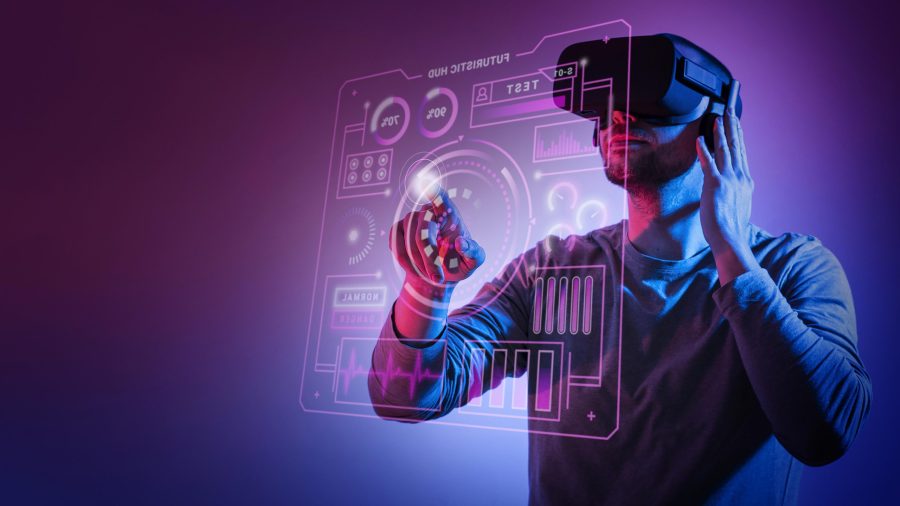As the world continues to evolve digitally, the concept of a metaverse is becoming more and more relevant. The term “metaverse” refers to a virtual world that is completely immersive, interactive, and accessible to anyone with an internet connection. Users can explore, interact, and even create their own content in the metaverse. Metaverse platforms have become increasingly popular, with various companies launching their own versions of the metaverse. This article will explore some of the most popular metaverse platforms and compare their features.
What is a Metaverse Platform?
A metaverse platform is a virtual world where users can interact with each other and the environment in a three-dimensional (3D) space. In these virtual worlds, users create avatars to represent themselves and can communicate with other users via text, audio, or video. Metaverse platforms offer various features, such as socializing, gaming, shopping, and education, making them versatile and appealing to a wide audience.
Examples of Metaverse Platforms
- Second Life
Second Life is one of the oldest and most well-known metaverse platforms. It was launched in 2003 and gained a lot of popularity as a social platform where users could create their own content and interact with others. In Second Life, users can explore different regions, attend events, and participate in various activities such as gaming, shopping, and role-playing. Second Life’s economy allows users to buy and sell virtual items for real money.
- Roblox
Roblox is another popular metaverse platform that was launched in 2006. It is mainly targeted towards children and teenagers, offering a wide range of games and activities for them to participate in. Roblox allows users to create their own games and share them with others. It has a strong social component, allowing users to interact with each other and make friends.
- Minecraft
Minecraft is a sandbox game allowing players to explore and create virtual worlds. It has a strong community and a vast selection of mods and plugins that add to its versatility. Minecraft can be played in single-player mode, but it also has a multiplayer option where users can interact with each other in a shared world. Minecraft also has an educational version used in schools to teach programming and other subjects.
- VRChat
VRChat is a virtual reality platform allowing users to create avatars and environments. It has a strong social component, allowing users to interact with each other in real time. VRChat also has various activities, such as gaming, exploring, and attending events. It is available on various platforms, including PC, Oculus Quest, and SteamVR.
- Decentraland
Decentraland is a blockchain-based virtual world that allows users to create, experience, and monetize content and applications. It is unique in that it is entirely owned by its users, meaning that users have complete control over the virtual world. Decentraland has an economy where users can buy and sell virtual land and virtual items and services.
Comparison of Metaverse Platforms
- User Interface and Experience
A metaverse platform’s user interface and experience are crucial in determining its popularity. Second Life and Minecraft have relatively complex interfaces that can be difficult for new users to navigate. In contrast, Roblox and VRChat have more straightforward interfaces that are easy to understand. Decentraland has a user interface that is tailored towards users with programming skills, making it more challenging for casual users to navigate.
- Social Component
The social component of a metaverse platform is essential in creating a sense of community and belonging. Second Life, VRChat, and Decentraland have strong social components, allowing users to interact with each other in real time. Roblox and Minecraft offer a sense of community through gameplay and user-generated content, but they may not have as robust a social component as the other platforms.
- Customization and Creativity
Metaverse platforms offer high customization and creativity, allowing users to express themselves uniquely. Second Life and Decentraland have the most extensive customization options, allowing users to create and monetize their content. Minecraft offers a similar level of customization through mods and plugins, but it may require some technical knowledge. Roblox and VRChat have more limited customization options, allowing users to create and share their content.
- Accessibility and Compatibility
Accessibility and compatibility are critical factors in determining the popularity of a metaverse platform. Minecraft is available on various platforms, including PC, mobile, and consoles, making it accessible to a wide range of users. Roblox and VRChat are also available on multiple platforms, but they may not have as broad a range of compatibility as Minecraft. Second Life and Decentraland are only available on PC, which may limit their accessibility.
- Monetization
Monetization is a crucial aspect of metaverse platforms, allowing users to earn real money from their virtual creations. Second Life and Decentraland have robust economies that allow users to buy and sell virtual land and items for real money. Roblox also has a virtual economy, but it is mainly geared towards younger users. Minecraft and VRChat do not have as extensive a monetization system, but users can still earn money through various means.
Conclusion
Metaverse platforms are becoming increasingly popular as people seek immersive and interactive digital experiences. Each platform offers unique features and capabilities that cater to different audiences. Second Life, Roblox, Minecraft, VRChat, and Decentraland are just a few examples of the many metaverse platforms available. When considering which platform to use, it’s essential to consider factors such as user interface, social component, customization options, accessibility, and monetization. Ultimately, the platform you choose should align with your interests and needs, allowing you to express yourself creatively and interact with others meaningfully.

